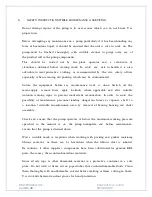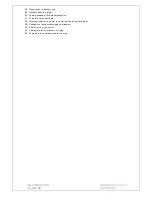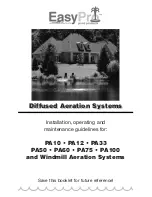
IOM/CPHM/DEC19/01
ISSUE DATE:14-12-2019
Page
39 | 48
REVISION NO.1
Do not touch any moving or rotating parts. Guards are provided to prevent access to
these parts, where they have been removed for maintenance they must be replaced
before operating the equipment.
Check that pump is primed. Pump should never be run dry as the pumped liquid acts
as lubricant for the close running fits surrounding impeller and damage will
be incurred.
Failure to supply the stuffing box or mechanical seal with cooling of flush water may
result in damage and premature failure of the pump.
Do not touch surfaces, which during normal running will be sufficiently hot to cause
injury. Note that these surfaces remain hot after the pump has stopped, allow
sufficient time for cooling before maintenance. Be cautious and note that other parts
of the pump may become hot if a fault is developing.
Do not operate water pumps in temperatures below freezing point, without first
checking that the pumped fluid is not frozen and the pump is free to rotate
.
Pumps
in these environments should be drained down during inactivity and re-primed
before starting.
In addition to local or site regulations for noise protection, KBL recommend the use of
personal ear protection equipment in all enclosed pump rooms and particularly those
containing diesel engines. Care must be taken to ensure that any audible alarm or
warning signal can be heard with ear
defenders worn.
Be aware of the hazards relating to the pump fluid, especially the danger from
inhalation of noxious and toxic gases, skin and eye contact or penetration. Obtain
and understand the hazardous substance data sheets relating to the pumped fluid and
note the recommended emergency and first aid procedures.










































